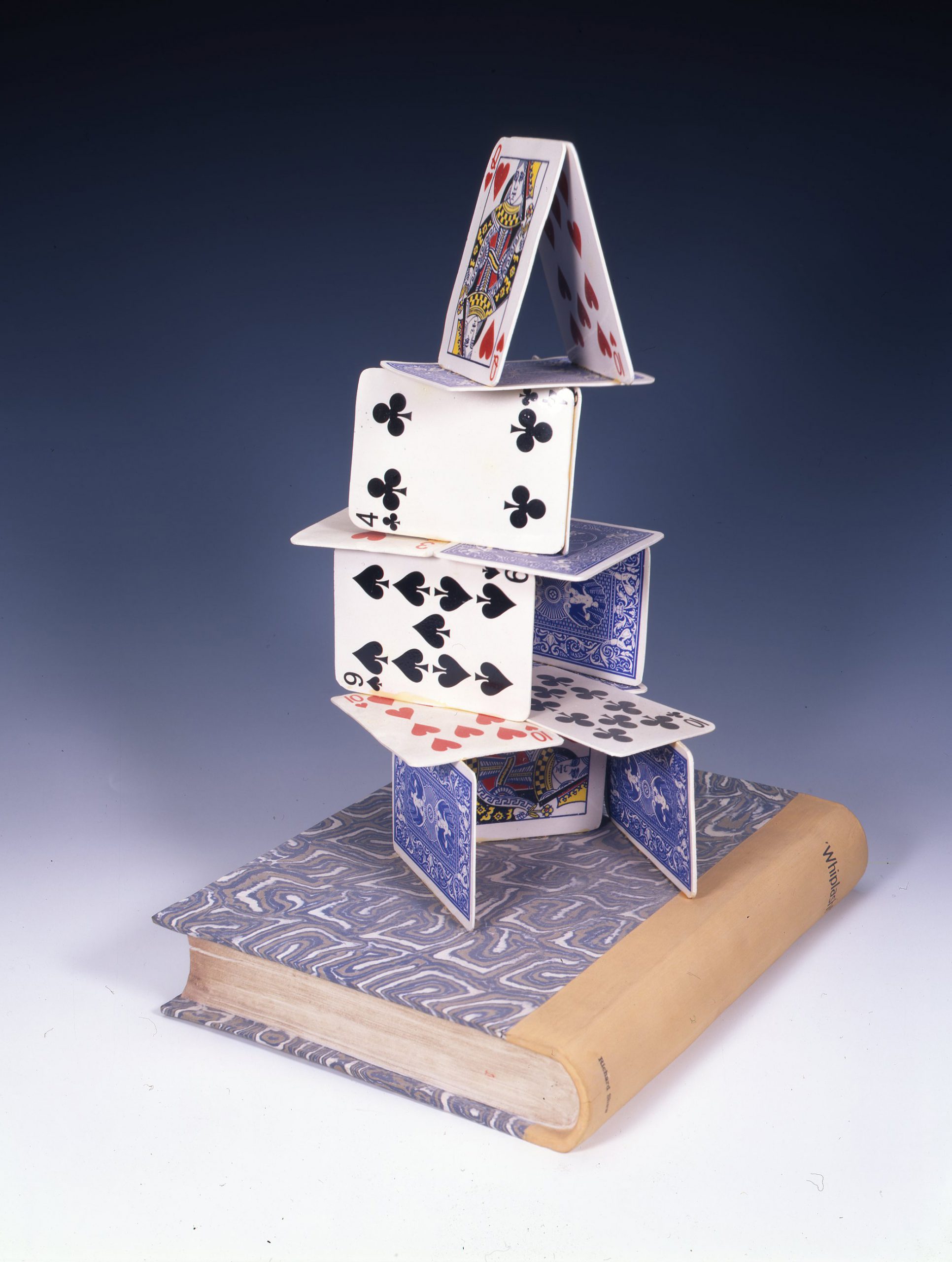Ceramist Richard Shaw (b. 1941) began working with clay in the 1960s at the San Francisco Art Institute. Shaw’s parents were both artists, his mother a painter and his father an animator at Walt Disney. Although he admired his father’s career from a young age, Shaw set out to be a “serious” artist. In an interview with Richard Wittaker, Shaw explained that he believed “‘real art’ was being a painter, not being an animator, a cartoonist or any of that stuff.” This statement is amusing today, as Shaw’s trompe l’oeil sculptures—the work he is best known for—are not often immediately recognizable as artworks. Painters have been using the illusionistic trompe l’oeil (deceive the eye) technique for millennia, but it became popular with ceramists in the early 1970s. Leaving behind a decade in which ceramics were wild, gritty, shocking, and strange, several ceramists, including Shaw, began creating highly technical and meticulously sculpted works that perfectly mimicked everyday material objects. A master of trompe l’oeil, Shaw creates highly realistic renderings of real life objects in order to fool viewers into believing that they are looking at the actual objects themselves, rather than clay sculptures. Shaw’s trompe l’oeil sculptures are often so convincing that museum visitors might not realize the works on display are clay until reading the object label. His arrangements often lead viewers to question why or how certain objects came together in such a fashion. Featuring a precarious tower of cards stacked on top of a closed book, what situation may have led to Whiplash!? Whiplash! is on view in Earth Piece through January 5, 2020.
-Eleanor Juergens, Curatorial Intern & Steffi Chappell, Assistant Curator


